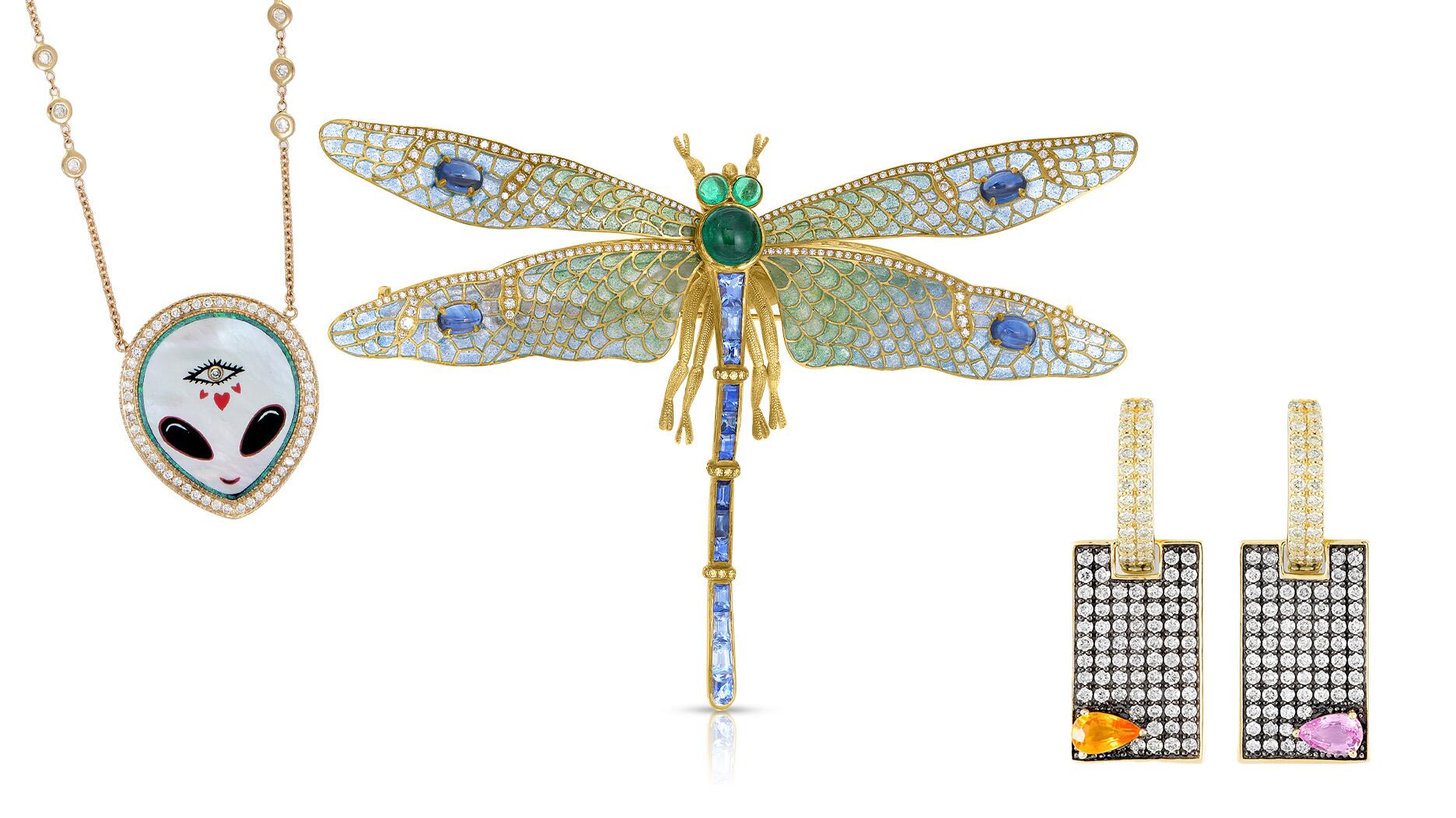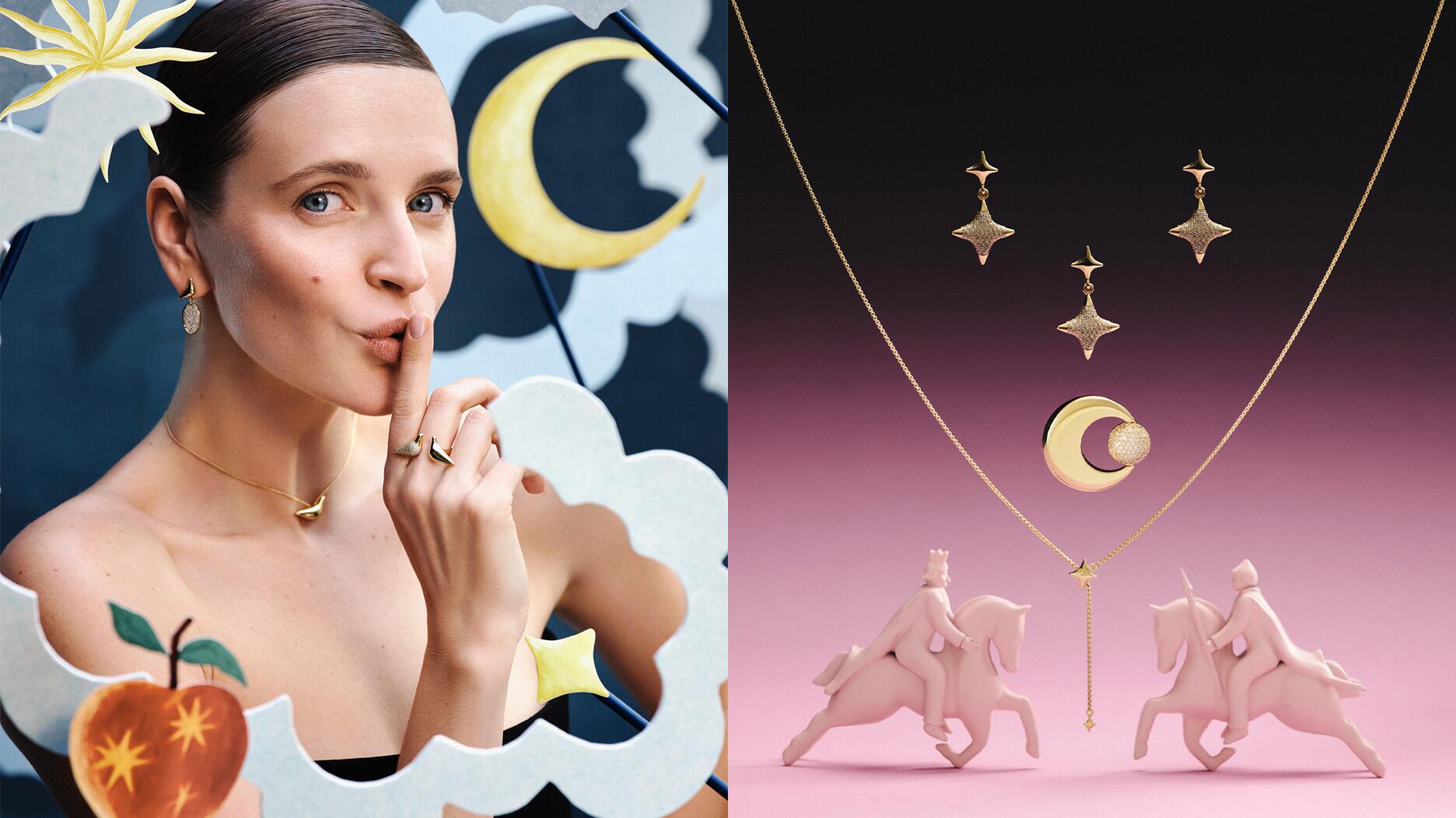Executive Chairman Richard Baker will take over the role as rumors swirl that a bankruptcy filing is imminent for the troubled retailer.
The History Behind … the ouroboros
Snakes have been bent, twisted and bejeweled for adornment’s sake for thousands of years. What is it about this figure--a commonly-feared reptile with scaly skin--that is so appealing to jewelry-makers?

New York--Snakes have been bent, twisted and bejeweled for adornment’s sake for thousands of years.
What is it about this figure--a commonly-feared reptile with scaly skin--that is so appealing to jewelry-makers?
New York jeweler Elizabeth Doyle believes the reptile’s draw lies in the fact that it has held so many different meanings. It is a very powerful symbol that has wound its way through many different cultures and religions.
To the ancient Egyptians, it represented eternal life while others equated the serpent with knowledge. In more modern times, the snake has a darker appeal, the creature that tempted Eve in the Garden of Eden and led to her being cast out of paradise but which many still try to charm.
The ouroboros, the ancient symbol of a snake eating its own tail, magnifies people’s dark fascination with these creatures by what it represents-- something devouring itself in order to survive. “That’s part of the appeal of the ouroboros,” she said. “People fear snakes but they love them.”
Doyle opened Doyle & Doyle, a New York City retail shop, with her sister Irene Pamela in 2000. The store sells vintage jewelry as well as modern collections they design in-house. Their newest collection, set to debut in September, centers on the ouroboros.
Here, Doyle talks with National Jeweler about the history behind the figure of the snake eating its own tail that’s so commonly seen in jewelry.
Where did the word “ouroboros” originate? Doyle said the word “ouroboros” is derived from the Greek terms “ouro,” meaning tail, and “boros,” which translates to eating; so literally, a tail-devouring creature. While the ouroboros is usually a snake eating its own tail, it can be a dragon as well.
When was this figure first used in jewelry? Egyptian jewelry incorporated snakes, including snakes eating their own tail.
The first reference to the ouroboros in text is traced to this time too. Doyle said that a drawing of a snake eating its own tail was discovered in the Enigmatic Book of the Netherworld, the ancient Egyptian funerary text discovered in the tomb of Tutankhamun (King Tut), which dates to the 14th century B.C.
What was the appeal of the snake for jewelry design, and of the ouroboros specifically? Because the snake sheds its skin, ancient people believed that it was regenerating itself, being born again, so the snake came to be equated
It appealed to people’s desire for a long life, vitality and youth--the same desires that exist today--and thus was seen as an auspicious creature to use as adornment.
While it is a symbol of regeneration and eternal life, there’s also a darker side to it, the idea that something has to devour itself in order to survive. “People,” Doyle observed, “really like that balance of evil and good.”
Was there a time period when the ouroboros was most popular? While snake jewelry never really went out of style the serpent motif, including the ouroboros, surged during the Victorian era because Queen Victoria liked snake jewelry and, in fact, received a green enamel snake ring from Prince Albert. The queen was like the Carrie Bradshaw or Oprah of her time; whatever she did, other people followed.
Doyle said ouroboros also were used in Victorian mourning jewelry because it could symbolize one’s eternal bond with another person. These pieces often incorporated turquoise, a gemstone that is symbolic of the idea of forget-me-not in the European tradition.
RELATED CONTENT: The History Behind ... Victorian mourning jewelry
Doyle said it also helped that the Victorian era was the first time jewelry was mass produced, making it available to those outside the upper class.
How can retailers find ouroboros designs to add to their antique or estate jewelry selection, or even their modern stock? If looking for antique ouroboros jewelry, Doyle recommends the Victorian era pieces, as they are easier to find. Georgian examples are scarce, and there’s a greater likelihood of running across fakes.
There are also plenty of modern designers incorporating the snake, including the ouroboros, into their designs.
Besides being a streamlined shape that lends itself easily to bracelets, rings, pendants and earrings, the snake also presents a long, smooth surface on which designers can engrave or etch scales or set gemstones.
“They’ve always been a part of jewelry design,” Doyle said of snakes. “You can do so much with it.”
The Latest

Mohr had just retired in June after more than two decades as Couture’s retailer liaison.

Shekhar Shah of Real Gems Inc. will serve as president of the Indian Diamond & Colorstone Association in 2026.

How Jewelers of America’s 20 Under 40 are leading to ensure a brighter future for the jewelry industry.

This year’s good luck charm features the mythical horse Pegasus, and is our first Piece of the Week of the new year.


Articles about crime, engagement rings, and a necklace worn in the World Series generated the most interest among readers.

As part of the leadership transition, Sherry Smith will take on the role of vice president of coaching strategy and development.

Roseco’s 704-page catalog showcases new lab-grown diamonds, findings, tools & more—available in print or interactive digital editions.

It marks the third time the country has headed the Kimberley Process. Ghana will serve as vice chair.

The new Bulova x Stetson designs highlight two animals often associated with the American West—the bison and the Texas Longhorn.

Its residency at Yamron Jewelers will run through May 2026.

From influential executives to innovative designers, we pay tribute to the people we said goodbye to this year.

The retailer is expanding into areas with large Indian and South Asian populations.

The Italian brand has opened its first flagship amid the peaks of the Dolomites in Madonna di Campiglio, Italy.

The new curation at the Natural History Museum of Los Angeles County showcases rare gem and mineral specimens in their uncut, natural state.

The couple pleaded guilty to concealing at least $127 million in cash transactions at its precious metals businesses.

Consumers shared concerns about prices, inflation, tariffs, trade, and politics in the survey’s write-in response section.

In February 2026, the auction house will move its headquarters to the former Steinway Hall, a neoclassical landmark on Billionaires’ Row.

The new show will take place Jan. 23-25, 2026.

The former BHP Billiton leader and Gemfields chairman is remembered for his influential leadership throughout his 50-year mining career.

The LVMH-owned brand has partnered with the costume design union to revamp its award for 2026.

The luxury titan inked a deal to acquire an initial minority stake in the jewelry manufacturer with a pathway to full ownership by 2032.

The company’s curation of unsigned vintage and estate jewelry debuted at the Bloomingdale’s in Costa Mesa, California.

In the recent multi-shipment seizure, CBP also found counterfeit Audemars Piguet, Moncler, and Chrome Hearts items.

Helzberg’s Chief Retail Officer Mitch Maggart shared details about its tests of a new store concept rooted in an elevated luxury experience.

Jewelers of America execs and National Jeweler editors discuss tariffs, the sky-high gold price, and the engagement that broke the internet.

The luxury goods company said founder Ippolita Rostagno will remain at the brand’s helm.
























